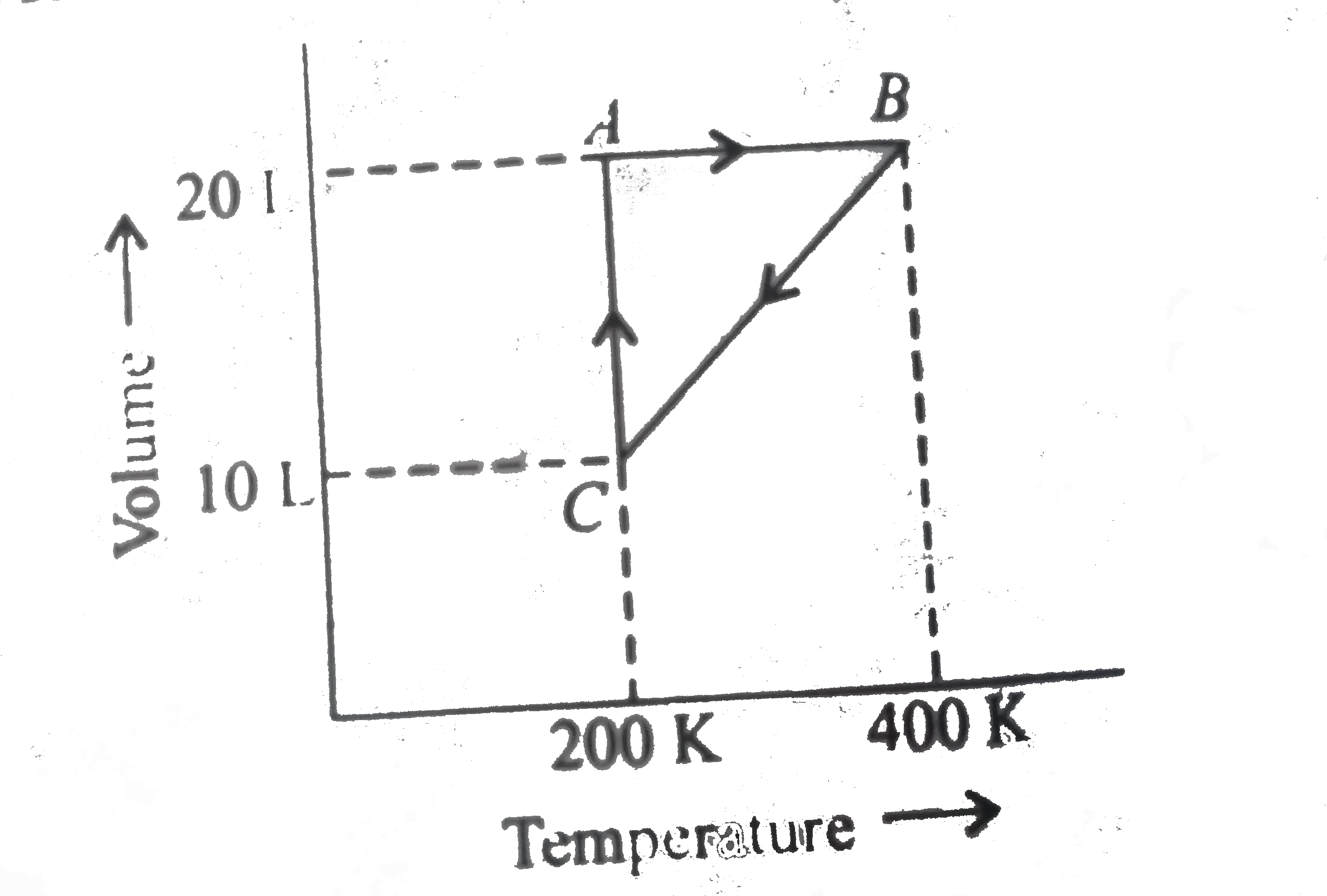A copper wire and an iron wire, each having an area of corss-section A and lengths L1andL2 are joined end to end. The copper end is maintained at a potential V1 and the iron end at a lower potential V2. If σ1andσ2 are the conductivities of copper and iron respectively, the potential of the junction will be
σ1V1+σ2V2σ1L1+σ2L2
σ1V1L1+σ2V2L2σ1L1+σ2L2
σ1L1+σ2L2σ1V1+σ2V2
σ1V1−σ2V2σ1L1−σ2L2
The correct Answer is:B
Resistance of copper wire, R1=L1σ1A
Resistance of iron wire, R2=L2σ2A
Let V is the potential at the junction.
As the wires are connected in series same current flows in the wires.
∴V1−VR1=V−V2R2
or V1R2−VR2=VR1−V2R1orV(R1+R2)=V1R2+V2R1
or V=V1R2+V2R1R1+R2
Substituting the values of R1andR2, we get
V=V1(L2σ2A)+V2(L1σ1A)L1σ1A+L2σ2A=V1σ1L2+V2σ2L1σ2L1+σ1L2
V=V1σ1L1+V2σ2L2σ2L2+σ1L1

Topper's Solved these Questions
- CURRENT ELECTRICITY Book:MTG GUIDEChapter:CURRENT ELECTRICITY Exercise:CHECK YOUR NEET VITALS
Explore 16 Videos
- CURRENT ELECTRICITY Book:MTG GUIDEChapter:CURRENT ELECTRICITY Exercise:MCQs AIPMT / NEET
Explore 32 Videos
- CURRENT ELECTRICITY Book:MTG GUIDEChapter:CURRENT ELECTRICITY Exercise:MCQs AIPMT / NEET
Explore 32 Videos
- ATOMS AND NUCLEIBook:MTG GUIDEChapter:ATOMS AND NUCLEIExercise:AIPMT/NEET(MCQs)
Explore 40 Videos
- DUAL NATURE OF MATTER AND RADIATION Book:MTG GUIDEChapter:DUAL NATURE OF MATTER AND RADIATION Exercise:AIPMT/ NEET MCQs
Explore 30 Videos
Similar Questions
Knowledge Check
The length of an iron wire is L and area of cross-section is A. The increase in length is l on applying the force F on its two ends. Which of the statement is correct
AIncrease in length is inversely proportional to its length LBIncrease in length is proportional to area of cross-section ACIncrease in length is inversely proportional to ADIncrease in length is proportional to Yound's modulus.Copper and iron wire of same length and diameter are in series and connected acress a battery .The resistance of copper is about one sixth of that of iron If E1 and E2 are the electron fields of in the copper and iron wires respectively then which of the following is correct ?
AE1<E2BE1=E2≠0CE1>E2DE1=E2=0A copper wire and a steel wire having the same cross-sectional area are fastened end to end and stretched by a fore F. The lengths of cpper and steel wires are in the ratio of 2:1 and their moduli of elasticity are in the ratio of 1:2. What is the ratio eces of their extensions?
A1:2B4:1C2:1D1:4
A copper strip AB and an iron strip AC are joined at A. The junction A is maintained at 0∘C and the free ends BandC are maintained at 100∘C. There is a potential difference between
View SolutionA copper strip AB and an iron strip AC are joined at A. The junction A is maintained at 0∘C and the free ends BandC are maintained at 100∘C. There is a potential difference between
View SolutionA copper wire of length 1.0 m and a steel wire of length0.5 m having equal cross-sectional areas are joined end to end. The composite wire is stretched by a certain load which stretches the copper wire by 1mm. If the Young’s modulii of copper and steel are respectively 1.0×1011Nm−2and2.0×1011Nm−2,
the total extension of the composite wire is:
View SolutionOne end of a Nichrome wire of length 2L and cross-sectional area A is attached to an end of another Nichrome wire of length L and cross-sectional area 2A. If the free end of the longer wire is at an electric potential of 8.0 volts, and the free end of the shorter wire is at an electric potential 1.0 volts, the potential at the junction of the two wires is equal to
View SolutionOne end of a Nichrome wire of length 2L and cross-sectional area A is attatched to an end of another Nichrome wire of length L and cross-sectional area 2A. If the free end of the longer wire is at an electric potential of 8.0 volts, and the free end of the shorter wire is at an electric potential 1.0 volts, the potential at the junction of the two wires is equal to
View Solution

